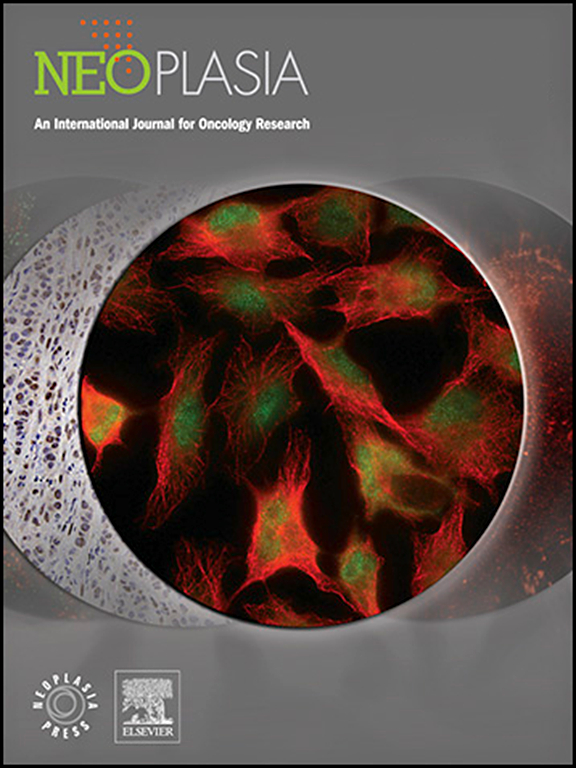New horizons in B-cell lymphoma immunotherapy: From immune checkpoints to precision medicine
IF 7.7
2区 医学
Q1 Biochemistry, Genetics and Molecular Biology
引用次数: 0
Abstract
B-cell lymphoma, a malignancy in hematology with high heterogeneity, has its genesis and progression intricately associated with immune system regulation. Over the past three decades, transformative breakthroughs in B-cell malignancy investigations have emerged through paradigm-shifting molecular discoveries. Nevertheless, numerous hurdles persist in attaining a comprehensive understanding and effective treatment of this disease. Novel chemotherapeutic strategies demonstrate promising potential in B-cell lymphoma management, particularly through targeting immune checkpoints such as PD-1 (Programmed Cell Death Protein 1), LAG-3 (Lymphocyte-activation Gene 3), TIM-3 (T-cell Immunoglobulin and Mucin-domain containing-3), and TIGIT (T-cell Immunoreceptor with Ig and ITIM Domains) play pivotal regulatory roles within the immune system. These molecules critically orchestrate immune cell activation dynamics, proliferative capacity, and effector functions, thereby preserving immunological homeostasis. Deciphering the functional architecture of co-inhibitory checkpoints (e.g., PD-1/CTLA-4) in lymphomagenesis serves dual imperatives: deconstructing tumor immune evasion programs while establishing conceptual frameworks for precision immunotherapeutics development. PD-1 engagement with PD-L1/PD-L2 impairs T lymphocyte activation, facilitating tumor immune evasion. Deciphering these molecular processes enables therapeutic agents to employ targeted blockade strategies to restore antitumor immunity in lymphomas. Moreover, in-depth research on these checkpoints holds great promise for the discovery of novel biomarkers. These biomarkers may help predict responses to immunotherapy in lymphoma patients. This would enable clinicians to tailor personalized treatment plans for each patient, maximizing the therapeutic efficacy while minimizing unnecessary side-effects. Certain genetic signatures related to these immune checkpoints might be identified as predictors of a favorable response to PD-1 inhibitor-based immunotherapy. This analysis systematically deciphers the molecular interplay of PD-1/LAG-3/TIM-3/TIGIT immune checkpoint axes, delineating their regulatory dynamics in B-cell lymphomagenesis. It systematically summarizes the current research achievements, delves into the existing problems, and explores the future research directions. This approach seeks to advance dual contributions to fundamental science and clinical application in B-cell lymphoma immunotherapy, thereby facilitating therapeutic innovations while deepening mechanistic comprehension of disease pathogenesis. By doing so, it aims to provide valuable insights for both basic research and clinical translation in the field of B-cell lymphoma immunotherapy, ultimately enabling advancements in patient care and deeper insights into this multifaceted condition.
b细胞淋巴瘤免疫治疗的新视野:从免疫检查点到精准医学
b细胞淋巴瘤是血液学中一种具有高度异质性的恶性肿瘤,其发生和发展与免疫系统调节复杂相关。在过去的三十年中,b细胞恶性肿瘤研究的变革性突破已经通过范式转移的分子发现出现。然而,在全面了解和有效治疗这种疾病方面仍然存在许多障碍。新的化疗策略在b细胞淋巴瘤治疗中显示出良好的潜力,特别是通过靶向免疫检查点,如PD-1(程序性细胞死亡蛋白1)、LAG-3(淋巴细胞活化基因3)、TIM-3 (t细胞免疫球蛋白和粘蛋白结构域-3)和TIGIT(具有Ig和ITIM结构域的t细胞免疫受体)在免疫系统中发挥关键的调节作用。这些分子关键地协调免疫细胞的激活动力学、增殖能力和效应功能,从而保持免疫稳态。破译共同抑制检查点(如PD-1/CTLA-4)在淋巴瘤发生中的功能结构具有双重必要性:解构肿瘤免疫逃避程序,同时建立精确免疫治疗开发的概念框架。PD-1与PD-L1/PD-L2的结合会损害T淋巴细胞的激活,促进肿瘤免疫逃避。破译这些分子过程使治疗剂能够采用靶向阻断策略来恢复淋巴瘤的抗肿瘤免疫。此外,对这些检查点的深入研究为发现新的生物标志物提供了巨大的希望。这些生物标志物可能有助于预测淋巴瘤患者对免疫治疗的反应。这将使临床医生能够为每位患者量身定制个性化的治疗计划,最大限度地提高治疗效果,同时最大限度地减少不必要的副作用。与这些免疫检查点相关的某些遗传特征可能被确定为对基于PD-1抑制剂的免疫治疗有利反应的预测因子。该分析系统地解读了PD-1/LAG-3/TIM-3/TIGIT免疫检查点轴的分子相互作用,描绘了它们在b细胞淋巴瘤发生中的调节动力学。系统总结了目前的研究成果,深入研究了存在的问题,并探索了未来的研究方向。该方法旨在促进b细胞淋巴瘤免疫治疗的基础科学和临床应用的双重贡献,从而促进治疗创新,同时加深对疾病发病机制的理解。通过这样做,它旨在为b细胞淋巴瘤免疫治疗领域的基础研究和临床转化提供有价值的见解,最终实现患者护理的进步,并更深入地了解这种多方面的疾病。
本文章由计算机程序翻译,如有差异,请以英文原文为准。
求助全文
约1分钟内获得全文
求助全文
来源期刊

Neoplasia
医学-肿瘤学
CiteScore
9.20
自引率
2.10%
发文量
82
审稿时长
26 days
期刊介绍:
Neoplasia publishes the results of novel investigations in all areas of oncology research. The title Neoplasia was chosen to convey the journal’s breadth, which encompasses the traditional disciplines of cancer research as well as emerging fields and interdisciplinary investigations. Neoplasia is interested in studies describing new molecular and genetic findings relating to the neoplastic phenotype and in laboratory and clinical studies demonstrating creative applications of advances in the basic sciences to risk assessment, prognostic indications, detection, diagnosis, and treatment. In addition to regular Research Reports, Neoplasia also publishes Reviews and Meeting Reports. Neoplasia is committed to ensuring a thorough, fair, and rapid review and publication schedule to further its mission of serving both the scientific and clinical communities by disseminating important data and ideas in cancer research.
 求助内容:
求助内容: 应助结果提醒方式:
应助结果提醒方式:


